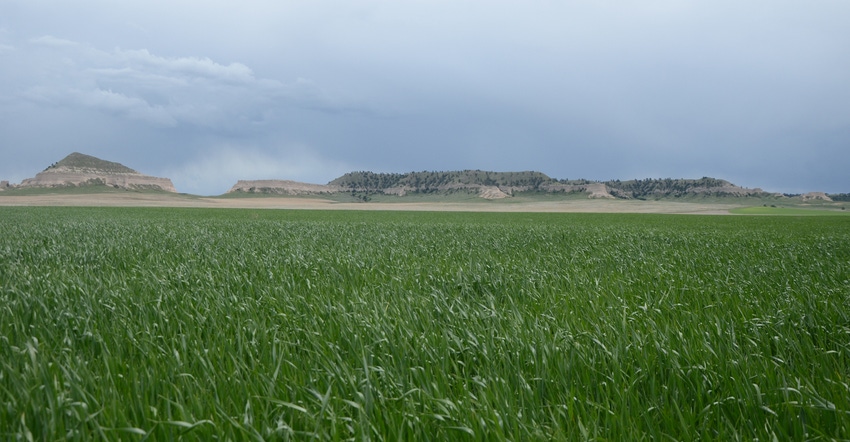December 19, 2018

By Martha Shulski
The Nebraska State Climate Office recently conducted an analysis of historical temperature and precipitation trends for the state’s eight climate divisions, including back to 1895 — the earliest recorded climate data — as well as the most recent three decades.
This analysis puts these changes in the context of climate projections from the recently released 4th National Climate Assessment.
Nebraska’s climate has warmed over the last century. On average, temperatures have increased 1.6 degrees F since 1895 (a rate of 0.15 degree per decade). The rate of warming has generally increased over the last 30 years (0.3 degree per decade), most notably for summer and fall.
One exception to the warming in recent years is a cooling trend for the winter — temperatures in winter months have cooled about 1 degree since 1987.
Overall, the rise of minimum temperatures is outpacing the rise in maximum temperatures by a factor of 2. Lows have warmed 2.2 degrees, while highs have warmed 1.1 degrees. Portions of Nebraska have experienced a slight long-term cooling trend in maximum temperatures during summer and fall. However, since 1987, the overall trend for summer and fall has been a warming of 1 degree.
Climate models project the overall warming trend will continue throughout this century, and the rate of warming will accelerate in the coming decades. By midcentury, average temperatures in Nebraska are expected to be 2 to 5 degrees warmer than they are now, increasing at a rate of 0.5 to 1.25 degrees per decade.
Nebraska experiences, on average, 10 to 20 days annually with a high temperature greater than 95 degrees. By midcentury, this number will likely double, impacting plant growth and development. Meanwhile, the number of extreme cold days will be cut by 50% to 66%, on average.
The length of the growing season can be quite variable in Nebraska from year to year — about 150 days on average. However, by midcentury, it is expected to increase by several weeks.
Currently, modified growing degree days (base of 50 degrees) accumulated per year average 3,000 to 4,000 units. An increase of 20% to 25% can be expected by midcentury.
Given the temperature projections and warming trend, cooling degree days are projected to be 40% to 60% more than the current average (about 1,000 units). Heating degree days average about 7,000 units annually in today’s climate. By midcentury, projections indicate a 10% to 20% decrease.
What about precipitation?
Nebraska’s precipitation patterns generally can be defined by high year-to-year variability, with a strong east-west gradient where annual totals decrease by 50%. Through the 20th century, Nebraska's climate generally became slightly wetter with an increase of 1.3 inches of precipitation (0.10 inch per decade). Much of this is a result of more precipitation during the spring (by 0.9 inch).
Trends over the last 30 years are amplified with an increase of 2 inches (0.67 inch per decade) in the annual average, with much of that occurring during spring (1.2 inches). Portions of Nebraska have experienced a recent drying trend during summer, fall and winter. The strongest trends have occurred in southern Nebraska, where average annual precipitation has decreased by about an inch since 1987.
The climate model projections for precipitation point to a continuing of the wetting trend for the annual average total. The historical trend can be expected to continue with an increase in precipitation.
There are expected to be changes, however, in when this precipitation falls. Winter and spring totals will be 15% to 25% higher than current conditions. Fall will be slightly wetter (5%), and summer will be 5% to 15% drier than the present climate, impacting summer irrigation demand.
Daily rainfall greater than 1 inch is generally not very common (less than five days a year) currently. However, a 15% to 35% increase in heavy precipitation days can be expected by midcentury. Furthermore, multiday extreme precipitation events will increase in severity. Soil cover and structure will be critical to reduce runoff and increase the infiltration of excess precipitation.
Related to Nebraska’s water resources, Rocky Mountain snowpack has seen an overall decline in the last several decades. This trend is expected to continue with less snow water equivalence in addition to an earlier snowmelt altering the timing of peak streamflows in many Nebraska rivers.
There is inherent variability in Nebraska’s climate and the potential for back-to-back flood-to-drought years. As such, reservoir and groundwater storage, and sustainable water management are expected to become even more important to mitigate enhanced risk to future precipitation variability that lies outside of the range of past experience.
Shulski is the Nebraska State Climatologist. This report comes from UNL CropWatch.
You May Also Like




